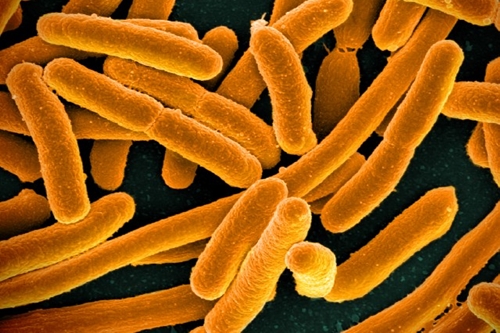24 September 2015. Researchers at Massachusetts Institute of Technology designed a new technique for fighting bacteria, by genetically engineering their natural predators, a type of virus. The team from the synthetic biology lab led by engineering professor Timothy Lu published its findings yesterday in the journal Cell Systems.
Lu and colleagues are seeking a better method for using bacteriophages, viruses that infect bacteria, as a way of treating harmful bacterial infections. Biologists have known about bacteriophages for decades, but so far have not found an efficient means of harnessing their potential for therapies, protecting food supplies, or other uses. In addition, bacteriophages usually target one type of virus, which means they need to be combined into a form of cocktail. This tends to blunt their effectiveness, making it difficult to design a product that can gain regulatory approval.
The researchers approached the problem by genetically engineering the genomes of bacteriophages to make them more robust and adaptable weapons against bacteria. The team discovered, however, that current genomic editing tools do not work well with viruses, which required finding a different method. They instead discovered inserting a bacteriophage genome into a yeast cell, it could co-exist with the yeast genome, and still be accessible for editing.
The researchers found with this approach they could efficiently and more easily swap out the genes in the tail region of a bacteriophage or phage, the part that attaches to bacteria, and change the target of that virus to other types of bacteria. “You keep the majority of the phage the same and all you’re changing is the tail region,” says Lu in an MIT statement, “which dictates what its target is.”
The team started with bacteriophages that seek out Escherichia coli or E. coli bacteria, a common foodborne and disease-causing microbe, and searched through databases of bacteriophage genomes for genetic codes addressing their tail sections. Using their yeast-based genomic editing method, the researchers were able to design and test bacteriophages targeting several strains of E. coli, as well as Yersinia and Klebsiella bacteria. Yersinia is another foodborne bacteria, while Klebsiella can cause pneumonia and infections in health care facilities that are often resistant to current antibiotics.
Lu and colleagues also believe the very specific targeting of these engineered bacteriophages makes the technique feasible for treating bacterial infections in the gut, where many useful probiotic bacteria also reside. In addition, the lab is designing bacteriophages to kill agricultural pests and other foodborne bacteria.
Read more:
- Anti-Infection Compound Devised for Dental, Wound Care
- Institute Developing Engineered Bacteria for Gut Diseases
- Alliance Building Platform Against Drug-Resistant Infections
- Hand-Held DNA Sequencer IDs Bacteria, Viruses
- Computer Model Predicts Bacteria Mutations, Aids Drug Design
* * *


 RSS - Posts
RSS - Posts
You must be logged in to post a comment.